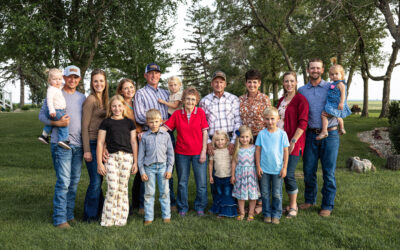
Beef’s a trip day 19: Beyond prices, grocery stores uncovered

I live between two small towns and each has a grocery store with mostly the same items. But if I want couscous I have to go one direction, and if adult beverages are on my shopping list I must go the other.
But most people have a lot more choice than that. So the retail business is a competitive one, each company trying to win over consumers with their low prices or high-quality or service or selection.
If your beef animal isn’t headed to your dinner table after it’s processed, it either goes through the foodservice distribution channel or is bound for retail. But there are a lot of logistics and business decisions that happen first.
You’ve all been in a grocery store, you know about the thousands of products they carry and their basic function. I’m not any more of a retail expert than you, but I’ve been lucky enough to work with people who are. We lost our friend and colleague Al Kober two years ago, but not before the veteran CAB director of retail shared with us his knowledge from a 50-year career in the retail meat business before he joined our company.
Here are some random bits that have helped me gain perspective:
- “Retailers price their meat at the highest level that consumers still perceive as delivering value. There are controls, like competition. In a metropolitan area a five-mile circle around a retail store could have 20 or 30 other retailers basically selling the same product.”
- “A retail store is very successful if it can make more than one penny per dollar (1%) average profit.” (Kind of makes one feel a little sheepish complaining about prices, huh?)
- “When you buy a 20-count box of oranges, you get 20 oranges. When you get a side of beef you’ve got to break it down.” (They have to sell the whole carcass to make money.)
- “You can have more than $100,000 of equipment in a store for wrapping, grinding and cutting. That has to be paid for.” (It seems producers aren’t the only ones who have to worry about capital purchases and maintenance.)
Al helped me walk through the math of things like product shrink and shelf life for an article on retail beef pricing and reminded me of the lag time between wholesale beef prices and the ability to pass that on to the consumer. (Most of them have a big chunk of their meat purchases slated out of the entire year, and what’s going on the front of that sales flier gets decided 4-6 weeks in advance.)
But one of my favorite bits from Al is this line: “We all need to get out of the mindset that the other people in the chain are somehow taking advantage and making all the profits. We have to realize that we all have a vested interest in keeping each segment profitable.”
Couldn’t agree more!
May your bottom line be filled with black ink,
Miranda
Beef’s a Trip Archives:
Day 1: Starting at day one
Day 2: Who are these people?
Day 3: Stockholders
Day 4: The cowherd’s purpose
Day 5: Deciding to care
Day 6: Quality focus doesn’t have to skip the middleman
Day 7: Stocking for quality
Day 8: SOLD!
Day 9: What have you done today?
Day 10: Working together to make ‘em better
Day 11: Keep on truckin’
Day 12: Packers want quality
Day 13: The target
Day 14: Packers up close & personal
Day 15: It’s not all about the beef
Day 16: Further processors
Day 17: From here to there–and a lot more
Day 18: He’s on your team
Day 19: Beyond prices, grocery stores uncovered
Day 20: Getting quality in the carts
PS—Holly Spangler’s “30 days on a Prairie Farm” series goes on, but we’re not alone. Check out the full list of other folks blogging along with us for 30 days in November on her blog.
You may also like
Connecting With Consumers at the Meat Case
CAB is committed to prioritizing consumers’ evolving expectations for high-quality beef, sustainability and connecting the next generation. Explore our Ranch to Table program and learn how we connect the next generation of ranchers and culinarians for a brighter, more sustainable future for the beef industry.
Michigan Angus Family Earns Ambassador Award
Seldom Rest Farms in Michigan, known for show-ring success, receives the CAB 2023 Ambassador Award for sharing their beef production story with Meijer grocery communications team and other CAB partners. The Foster family shares their passion for Angus cattle while fostering connections within the beef supply chain and promoting the Angus breed and CAB’s role in the industry.
North Dakota Partnership Earns CAB Progressive Partner Award
The Bruner and Wendel families earned the 2023 CAB Progressive Partner award by selling high-quality beef through Dakota Angus, LLC, as part of the CAB Ranch To Table program. They focus on their commitment to quality, data-driven decisions, achieve impressive CAB and Prime percentages and offer high-quality beef directly to consumers in their communities.



